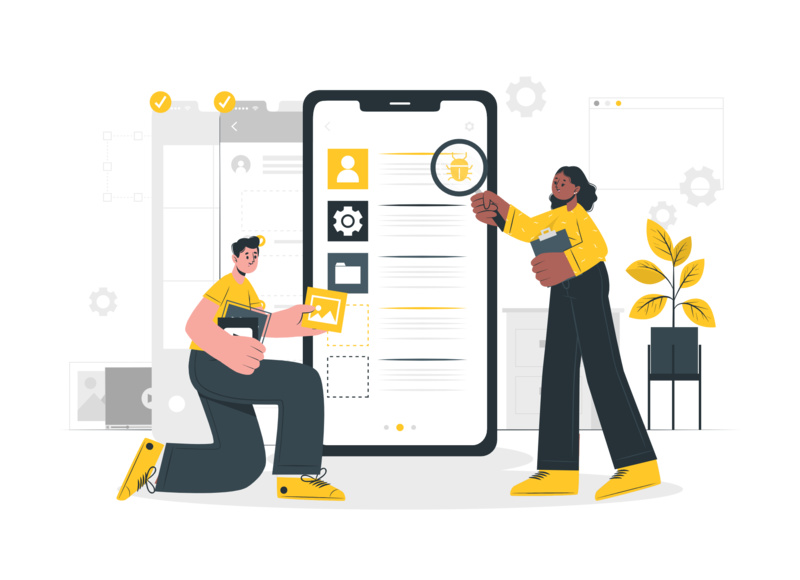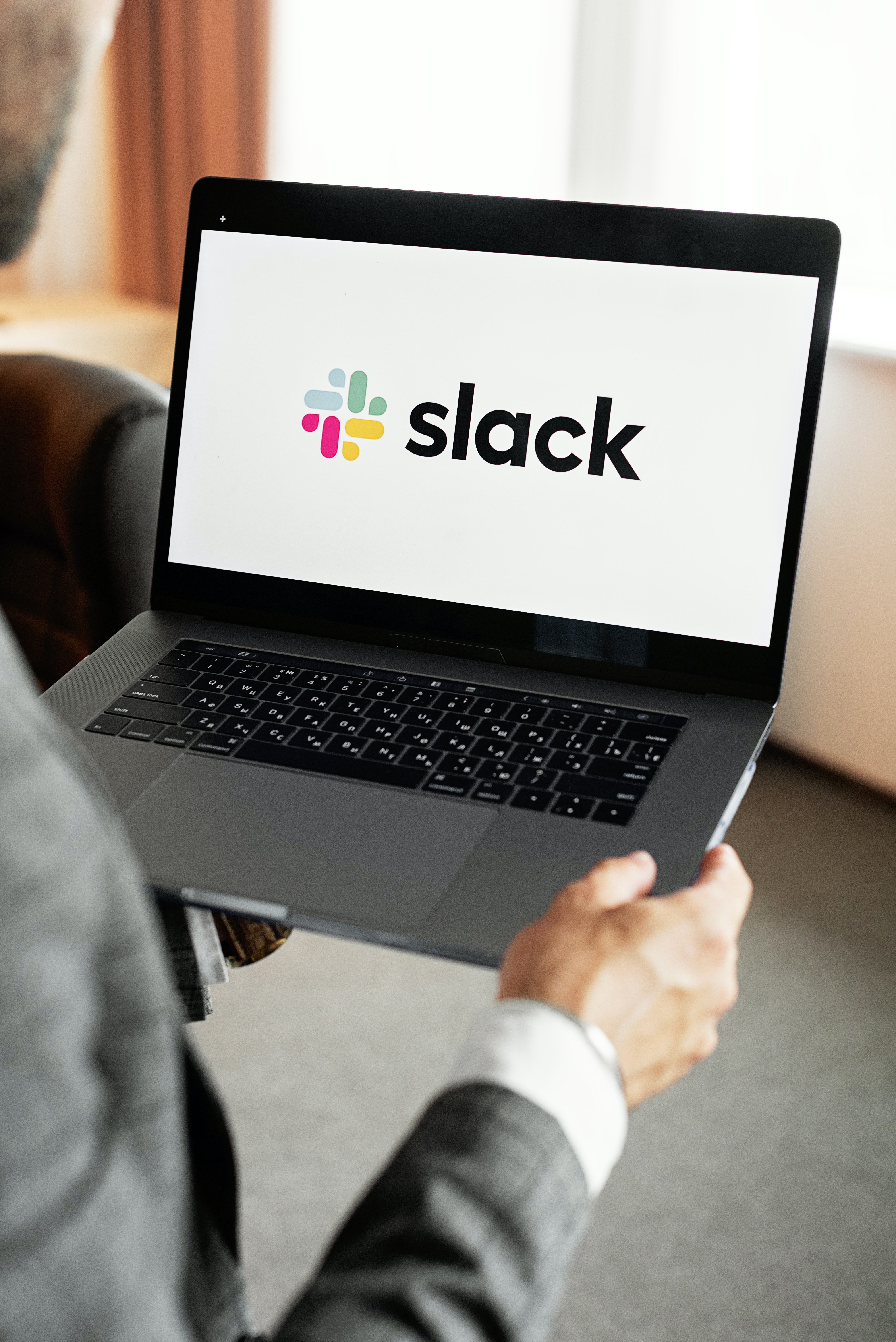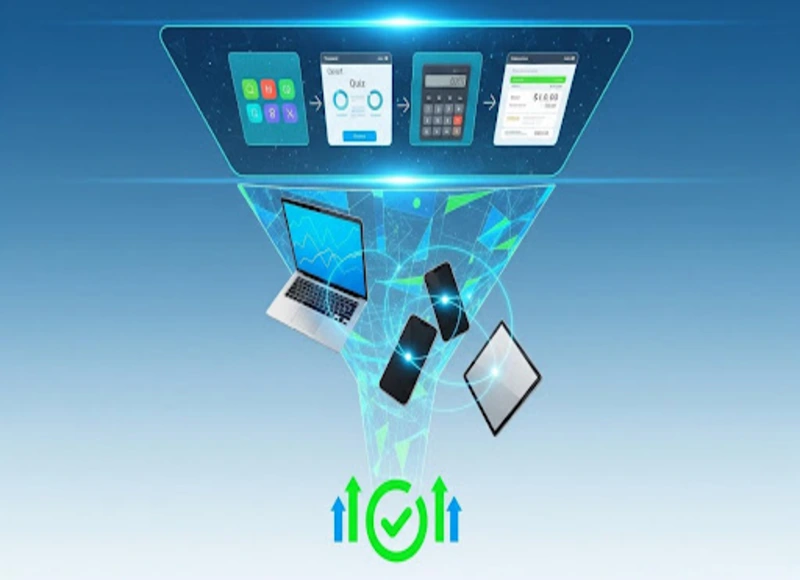Table of Contents
A landing page is your first chance to convert a visitor into a lead. In this article, we'll teach you how to create an effective landing page that will increase the likelihood of converting visitors.

App Landing Pages are web pages designed to promote and market a mobile app. They are created to give visitors valuable information about the product and increase the likelihood of downloading the app. App Landing Pages are typically the first contact point between a user and an app, and as such, they should be well-designed, informative, and compelling.
The goal of an App Landing Page is to convince visitors that the app is worth downloading. As such, the page should focus on the product's benefits rather than its features. It should also be user-friendly, with clear calls to action and easy navigation.
An App Landing Page should include essential information about the app, such as its features, pricing structure, and screenshots. It should also have reviews from other users, as these can be powerful indicators of quality and trustworthiness.
In addition to the core information about the app, an App Landing Page should also include a clear call to action. This could be a button prompting users to download the app or a form asking users to sign up for a trial version.
App Landing Pages should be optimized for search, as this will increase their visibility and the chances of being found. This means including relevant keywords and phrases and optimizing images and other media for search engines.
Finally, App Landing Pages should be tailored to the platform they are being viewed on. This means they should be responsive so they look great on any device. They should also be optimized for mobile, as many users will view them on their phones or tablets.
App Landing Pages are essential for any mobile app. They should be well-designed, informative, and optimized for search and mobile. By following these best practices, app developers can increase the visibility and downloads of their products.
What are the tools required for App development?
App development has become an important part of modern society and a crucial tool for businesses to reach out to their customers. Several tools are available for app development, each offering unique features and advantages. In this article, we will discuss some of the most commonly used tools for app development.
The first tool for app development is a mobile app development framework. A mobile app development framework is a set of tools and libraries that enable developers to create mobile applications. These frameworks provide the necessary structure and components to create an application quickly and efficiently. Popular mobile app development frameworks include Ionic, React Native, Flutter, and Xamarin. Each of these frameworks offers distinct advantages and disadvantages depending on the developer's needs.
Another important tool for app development is an integrated development environment (IDE). An IDE is a software suite that provides a single interface for all development tasks. It allows developers to write, compile, debug and test their code. Popular IDEs used for app development include Android Studio, Visual Studio, and Xcode.
The third important tool for app development is a software development kit (SDK). An SDK is a collection of tools and libraries used to develop a specific type of application. It includes libraries, tools, and documentation to help developers create the desired application. Popular SDKs include the Android SDK, iOS SDK, and Windows SDK.
Finally, an app deployment platform is essential for deploying your app. A deployment platform is a service that hosts your app on a remote server. Popular app deployment platforms include Amazon Web Services, Google Cloud Platform, and Microsoft Azure.
What is an App development framework?
App development frameworks are software frameworks that provide a structured approach to creating applications. They are designed to help developers create applications quickly, efficiently, and with better security. Frameworks provide a set of components, libraries, and services that developers can use to create their applications.
The primary benefit of using an app development framework is that it helps to reduce the amount of code a developer needs to write. This reduces the time spent on development and helps ensure that the code is well-organized and structured. Frameworks also provide a set of pre-made components, libraries, and services that can be used to create an application quickly. In addition, these components often have the necessary security and performance features already built in, which saves time and effort.
Many different app development frameworks are available, each of which has its own strengths and weaknesses. Some popular frameworks include React, Angular, Vue, Ionic, and Flutter. Each of these frameworks has its strengths and weaknesses and should be chosen based on the needs of the application being created.
When choosing an app development framework, developers should consider the complexity of the application being created and the features that are required. Complex applications may require a more advanced framework, while more straightforward applications can use simpler frameworks. Additionally, developers should consider the type of platform the application is being developed for, as some frameworks may be better suited to specific platforms than others.
Once a framework has been chosen, developers can begin to create their applications. While some frameworks are more accessible to learn than others, most developers will need to learn the various components and libraries included in the framework. Additionally, developers may need to spend some time understanding the various APIs associated with the framework to ensure that their application functions correctly.
App development frameworks provide a convenient and organized approach to developing applications. They are designed to help developers create applications quickly, efficiently, and with better security. While there is no one-size-fits-all approach to choosing a framework, developers should consider the needs of their application and the required features. This will help ensure that the most suitable framework is chosen for their needs.
In conclusion, these are some of the most commonly used tools for app development. Each tool has its advantages and disadvantages depending on the developer's needs. Choosing the right tools for your project is important to ensure the best possible outcome.
Process of Mobile App Development
The development of mobile applications has become a key factor in the success of businesses in the 21st century. With the emergence of smartphones and tablets, mobile app development has become an important part of any business's digital strategy. However, to keep up with the competition, a mobile app must provide a great user experience, be functional, and be tailored to the target audience's needs.
The mobile app development process can be broken down into several distinct steps. These steps include market research, wireframing, design, development, testing, and deployment.
1. Market Research
Market research is essential in app development. This step involves researching the target market, understanding user needs, and identifying the gap between current offerings and user needs. This helps you decide what features should be included in the app and predicts app success.
2. Wireframing
A process of creating a blueprint of the app's layout and functionality. This step allows developers to define the app's user experience, user flow, and general structure.
3. Design
After wireframing is complete, the design phase begins. This phase involves creating the visuals and user interface of the app. This includes designing icons, buttons, and other visuals.
4. Development
The development phase is the most complex and lengthy step in the process. This involves writing the code for the app and integrating it with any APIs or other services.
5. Testing
After development, the app must be tested to ensure it works correctly in various conditions. This includes testing on different platforms, devices, and operating systems.
6. Deployment
After the app has been tested and is ready to be released, it must be deployed to the app stores. This involves submitting the app to the stores, managing submissions, and responding to feedback or reviews.
The mobile app development process is complex and requires a great deal of planning and expertise. However, it can be a great way to create a successful mobile product if done correctly. Therefore, it is important to understand the process and take the time to ensure each step is completed properly. This will help ensure the best possible user experience and increase the chances of success.
Some of the Best Practices to Optimize Your Mobile UX
In today's mobile-driven world, it's become essential for businesses to optimize their mobile user experience (UX) to attract and retain customers. Mobile UX is the overall experience a user has when engaging with a mobile app or website on a mobile device, and it's important to ensure that your mobile UX is optimized to provide the best possible experience for users. Here are some of the best practices to optimize your mobile UX.
1. Optimize Your Site for Mobile
One of the most important best practices for optimizing your mobile UX is ensuring your site is optimized for mobile. This means ensuring that the design of your site and the text and images used are optimized for a mobile screen and that your site loads quickly and efficiently on mobile devices. Using a simple landing page creator would be a good option if minimalism, speed, and mobile-friendly design are a priority.
2. Make Your Site Easy to Navigate
Another important best practice for optimizing your mobile UX is making your site easy to navigate. This means making sure that menus, buttons, and links are easy to find and use on a mobile device and that users can easily move between pages without having to scroll or search for the information they're looking for. If you don’t have a lot of technical expertise, consider using a website builder to make the process easier. We highly recommend the one powered by Hostinger, which also includes AI features. With tools like this one, you can quickly create a clean and well-structured site that’s easy to navigate, without needing coding skills or a big budget. This way, you can ensure that menus, buttons, and links are optimized for mobile users, helping visitors move smoothly through your site.
3. Use Responsive Design
Responsive design is an important best practice for optimizing your mobile UX. Responsive design allows your website or app to adjust its layout and design depending on the size of the device being used, ensuring that users have a consistent experience no matter which device they're using.
4. Utilize Push Notifications
Push notifications are an effective way to keep users engaged with your site or app. Push notifications are messages sent directly to users' mobile devices and can be used to alert users to new content, upcoming sales, or other important information.
5. Optimize Your Load Times
Another important best practice for optimizing your mobile UX is to ensure that your site or app loads quickly and efficiently on mobile devices. Slow loading times can significantly reduce user engagement, so it's important to ensure that your site is optimized to load quickly and efficiently on mobile devices.
6. Utilize A/B Testing
A/B testing is a great way to optimize your mobile UX. A/B testing involves testing different versions of your site or app to see which version performs better with users. This can help you identify which design elements, features, and content are most effective at engaging users and can also help you optimize your mobile UX to meet your users' needs better.
By following these best practices, you can ensure that your mobile UX is optimized to provide the best possible experience for users. Optimizing your mobile UX can attract and retain more customers and ensure that your business is successful in the mobile-driven world.
5 Best Examples of App Landing Pages Ideas That Will Inspire You
When developing a successful mobile app, having an effective landing page is a must. Your app's landing page is the first thing potential customers will see when they search for your app, and it's the most important factor in whether or not they decide to download it. A great app landing page idea can make all the difference in getting users to take the plunge and download your app, so it's important to make sure you have a useful page that is both informative and visually appealing.
To help you get inspired and create a helpful app landing page, here are 5 best examples of app landing pages for mobile and PC both that can help you attract more customers and get your app off the ground.
1. Dropbox

The popular file storage and sharing solution has been around for over a decade. It's no wonder that the company has managed to create an app landing page that is informative and user-friendly. This page, which visitors can find on the official Dropbox website, is designed to provide an overview of the app and its features.
The landing webpage introduces the company and its various features, including file storage, sharing, collaboration, and security. The company's mission statement is also highlighted, which states that Dropbox is "committed to helping people stay organized, connected, and productive." This statement is followed by a brief overview of the app available on both desktop and mobile platforms.
Next, the page introduces the main features of the app. The focus here is on the user experience, with the page highlighting the ease with which files can be stored and shared. It also emphasizes the platform's security, with Dropbox indicating that users can keep their files safe and secure.
The best website design landing page also includes a section that focuses on the benefits of using Dropbox. This section details how the app can help users be more productive, such as streamlining collaboration, simplifying document sharing, and enabling easy access to files from anywhere.
Finally, the page offers a quick tour of the app, with screenshots showing how it looks and works. This is followed by a link to download the app, which is available for iOS and Android devices.
Dropbox's app landing page is a great example of effectively introducing a product and its features to potential users. It provides a concise overview of the app while also emphasizing the user experience and benefits that it provides. The page also makes it easy for users to download and start using the app immediately.
2. Evernote

Evernote is a powerful note-taking and organization app that provides a great way to capture, organize, and share information from any device. The app has a modern and intuitive design that makes it easy for all users.
The Evernote App Landing Page is the first place prospective users learn about the app and discover how it can help them take their productivity to the next level. The landing page is designed to provide prospective users with a comprehensive overview of the app's features, including its ability to capture notes, tasks, and reminders. In addition, the page explains how the app can help users stay organized and productive while providing a platform to share information with others.
Additionally, the page includes screenshots of the app, giving users a better understanding of how it works. The page also includes helpful resources such as a video tour of the app, a user guide, and an introduction to Evernote's powerful features. These resources provide users with a comprehensive overview of the app and help them understand how it can help them get more organized and productive.
The Evernote App Landing Page also includes customer success stories and links to the company's blog, Facebook page, and Twitter account. This provides users with additional resources and information to help them learn more about the app and how it can help them achieve their goals.
Overall, the Evernote App Landing Page is an excellent resource for prospective users to learn more about the app and understand how it can help them stay organized and productive. The page provides a comprehensive overview of the app's features and includes helpful resources to help users learn more about the app. Additionally, the page consists of customer success stories and links to the company's social media accounts, giving users access to additional resources and information.
3. Slack

Slack is a popular communication and collaboration platform for teams of all sizes. The Slack App Landing Page is designed to make it easy for teams to get started with the app. It provides a simple, intuitive interface that allows users to get up and sprint.
The Slack App Landing Page has been designed to be a one-stop shop for onboarding and setting up the app. It provides easy access to all the features and information that users need to get started. The page is divided into four main sections: sign up, learn, collaborate, and customize.
The sign up section allows users to create an account and get started. It lets them quickly connect with their existing team members and set up their workspace.
The learn section gives users an overview of the app and its features. It also includes tutorials and tips for getting the most out of the app.
The collaboration section lets users connect with their team members and start working together. It includes features like chat, file sharing, and task management.
Finally, the customize section allows users to personalize the app to their specific needs. This includes features like customizing the look and feel of the app, adding integrations and plugins, and creating custom workflows.
Overall, the Slack App Landing Page is a great way for teams to get started with the app quickly. It provides a simple, intuitive interface that makes it easy to get up and run fast. In addition, its comprehensive features and customization options make it the perfect place for teams to start their journey with the app.
4. Pocket
The Pocket App Landing Page is a great example of how a landing page can be used to maximize conversions. This landing page is designed to capture the attention of potential customers and direct them to the Pocket App. It features a clean, modern design, a bold call to action, and straightforward navigation. The page is also optimized for mobile devices so users can access it on the go.
The Pocket App Landing Page starts with a bold headline introducing the app and its features. This is followed by a list of features and benefits that help to explain why the app is so useful. The page also features screenshots of the app in action, which further emphasize its features and benefits.
The page also features a clear call to action that encourages users to download the app. It also features a form where users can enter their email addresses to receive more information about the app. This allows businesses to capture leads and build a list of potential customers.
Overall, the Pocket App Landing Page effectively captures potential customers' attention and directs them to the Pocket App. It features a modern, mobile-friendly design, clear navigation, and a clear call to action. The page also captures leads and helps businesses to build a list of potential customers.
5. Wunderlist
Wunderlist is an app that allows people to manage tasks, create to-do lists, and collaborate. Its intuitive design and powerful features make it one of the most popular task management apps. The app's landing page is an important part of its marketing and user experience, and it's designed to give users an idea of what the app can do and how to get started using it.
The Wunderlist landing page begins with a bold headline that explains what the app does and why it's helpful. It also includes a beautiful screenshot of the app that showcases its design and features. Underneath this, there's a short description of the app and a list of its features. This is followed by a call to action that encourages visitors to download the app.
The landing page also features a selection of user testimonials. These testimonials highlight the app's benefits, such as how it helps people stay organized and how it has improved their productivity. These testimonials are an effective way to showcase the app's value and encourage users to give it a try.
The landing page also features a short video that walks viewers through the app's features and how to use them. This video is a great way to give users a better understanding of the app and how it works. Finally, at the bottom of the page, there's a selection of links to the app's social media accounts and support page. This makes it easy for users to get in touch with the team, ask questions, and stay up-to-date on the latest news and updates.
Overall, the Wunderlist landing page is a great example of how to design an effective app landing page. It clearly explains what the app does, showcases its features, and encourages users to try it. It also provides an easy way for users to connect with the team and find more information about the app.
These 5 app landing pages are great examples of creating an effective landing page that will attract more customers and get your app off the ground. By taking inspiration from these pages, you can create your own effective app landing page that is both informative and visually appealing.
Conclusion
App landing Pages have surfaced as the latest tools for conversion. Many people use mobile apps to access services; these landing pages enjoy the better engagement. It's essential to notice a few of the things that are mentioned above. Knowing about app landing pages is a must nowadays to attract consumers, and what better way than doing it after analyzing the competitors perfectly?
You can contact the top mobile app development companies listed with us for all your mobile app development needs.We have the database of 1700+ Agencies opertaing worldwide and from major countries like USA, India, United kingdom, Canada, Dubai & many more.
Cover Image Credit : Freepik
Recent Blogs
Key Benefits of Hiring Nearshore React.js Development Teams for Enterprise Projects
-
20 Jan 2026
-
10 Min
-
127
Stop Building from Scratch: Boost Your Marketing Funnel with App Templates
-
13 Jan 2026
-
10 Min
-
466







